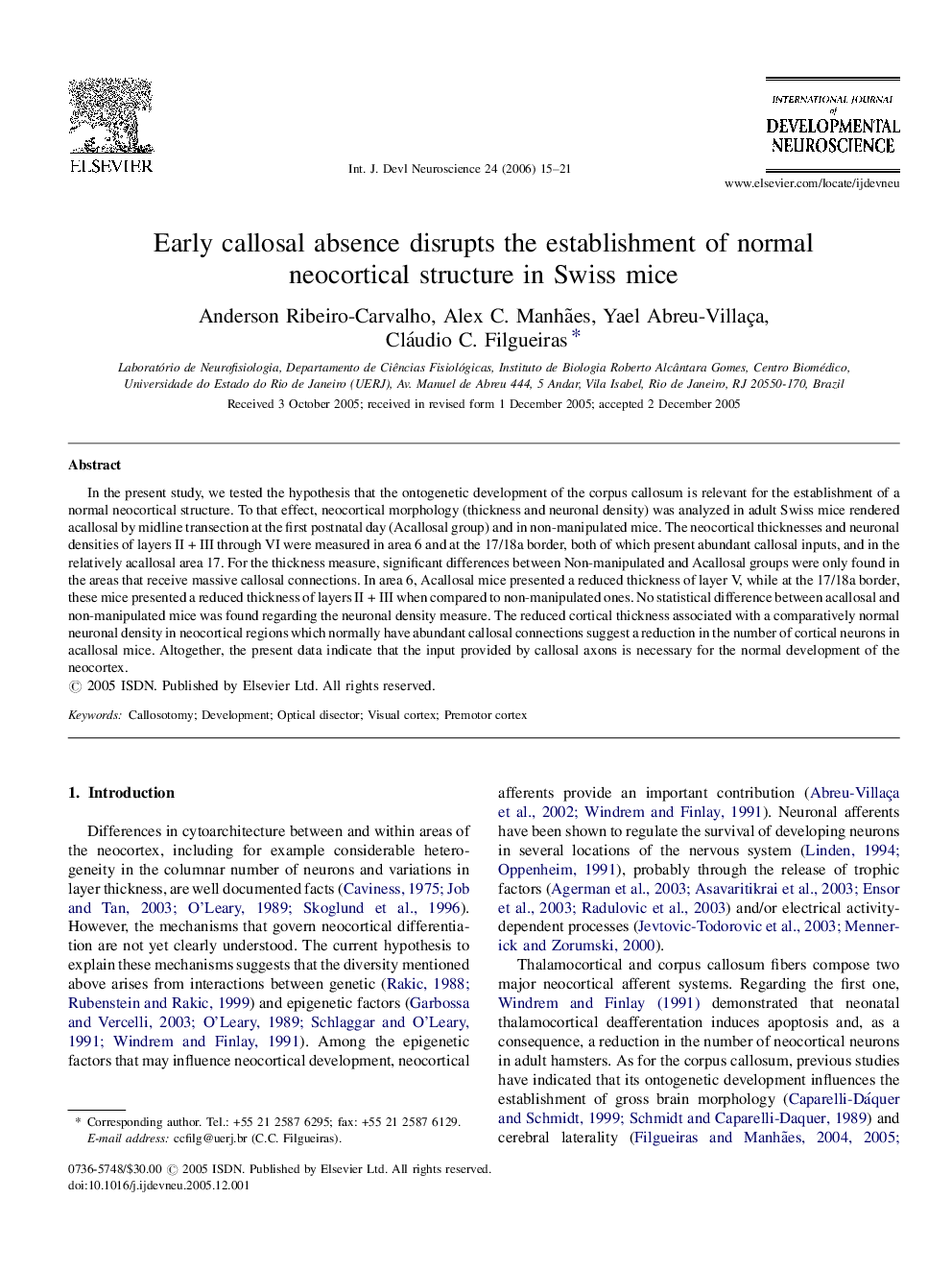| Article ID | Journal | Published Year | Pages | File Type |
|---|---|---|---|---|
| 2787199 | International Journal of Developmental Neuroscience | 2006 | 7 Pages |
In the present study, we tested the hypothesis that the ontogenetic development of the corpus callosum is relevant for the establishment of a normal neocortical structure. To that effect, neocortical morphology (thickness and neuronal density) was analyzed in adult Swiss mice rendered acallosal by midline transection at the first postnatal day (Acallosal group) and in non-manipulated mice. The neocortical thicknesses and neuronal densities of layers II + III through VI were measured in area 6 and at the 17/18a border, both of which present abundant callosal inputs, and in the relatively acallosal area 17. For the thickness measure, significant differences between Non-manipulated and Acallosal groups were only found in the areas that receive massive callosal connections. In area 6, Acallosal mice presented a reduced thickness of layer V, while at the 17/18a border, these mice presented a reduced thickness of layers II + III when compared to non-manipulated ones. No statistical difference between acallosal and non-manipulated mice was found regarding the neuronal density measure. The reduced cortical thickness associated with a comparatively normal neuronal density in neocortical regions which normally have abundant callosal connections suggest a reduction in the number of cortical neurons in acallosal mice. Altogether, the present data indicate that the input provided by callosal axons is necessary for the normal development of the neocortex.
